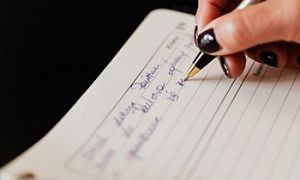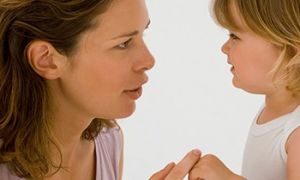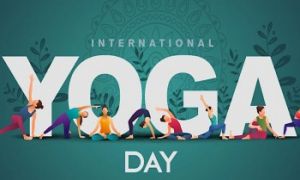The following lists the sub-outcomes, examples of evidence that children can achieve each sub-outcome and how educators can promote and help children to achieve MTOP Learning Outcome 4 - Children And Young People Are Confident And Involved Learners V2.0.
School-age children are involved in a wide range of activities throughout the day and they have a greater capacity for independence, self-direction and collaboration. Children are engaged with peers, family and educators and the community in formal and informal learning opportunities.
Learning Outcome 4 - Children And Young People Are Confident And Involved Learners V2.0
Children and young people develop a growth mindset and learning dispositions such as curiosity, cooperation, confidence, creativity, commitment, enthusiasm, persistence, imagination and reflexivity
This is evident when children and young people, for example:
- freely follow and extend their own interests and curiosities with enthusiasm, curiosity, energy and concentration
- investigate, imagine and explore ideas
- initiate and contribute to play and leisure experiences emerging from their own ideas
- participate in a variety of rich and meaningful inquiry-based experiences
- explore diverse ways of knowing, being and doing in their learning
- persevere even when they find a task difficult and experience the satisfaction of achievement
- see their culture represented in their environment including Aboriginal and Torres Strait Islander children and young people
- demonstrate, curiosity, cooperation, confidence, creativity, commitment, enthusiasm, persistence, imagination and reflexivity
- take calculated risks when learning by trying new strategies
- use strategies to develop a growth mindset such as using positive self-talk when trying to overcome a problem or setback
- revisit previous experiences and plan new challenges
- be open to other ways of doing things
- engage in creative experiences such as art, dance and drama.
Educators promote this learning for all children and young people when they, for example:
- discuss how the brain develops and is linked to self-regulation
- recognise and value children and young people’s involvement in a variety of play and leisure experiences
- provide environments that are flexible and open-ended
- respond to children and young people’s dispositions by commenting on them and providing encouragement and additional ideas
- encourage children and young people to engage in both individual and collaborative explorative and reflective processes
- listen carefully to children and young people’s ideas and discuss with them how these ideas might be developed
- model inquiry processes, including observation, curiosity and imagination, try new ideas and take on challenges
- explore the diversity of cultures and social identities
- critically reflect on personal responses to all kinds of diversity
- assist children and young people to explore Aboriginal and Torres Strait Islander ways of knowing, being and doing, e.g. explore the 8 Aboriginal Ways of Learning
- create a responsive environment to support children and young people’s sustained investigations
- include a growth mindset model in their everyday activities
- develop their skills in talking to children about how their brains work and how it grows as they learn.
Children and young people develop a range of learning and thinking skills and processes such as problem-solving, inquiry, experimentation, hypothesising, researching and investigating
This is evident when children and young people, for example:
- apply a wide variety of thinking strategies to engage with situations and solve problems, and adapt these strategies to new situations
- create and use representation to organise, record and communicate ideas and concepts
- make predictions and generalisations about their daily activities, aspects of the natural world and environments
- manipulate objects and experiment with cause and effect through trial and error
- use reflective thinking to consider why things happen and what can be learned from these experiences
- show leadership, and follow directions given by other children and young people
- make choices and take control
- have opportunities to participate in program decision-making
- connect with the Aboriginal and Torres Strait Islander community (e.g. Elders, role models) to engage with stories about place-based history and culture.
- use a range of skills and processes such as problem solving, inquiry, experimentation, hypothesising, researching and investigating
- develop and test theories to solve problems
- use a range of strategies to organise and represent mathematical and scientific thinking
- use a range of media to express their ideas through the arts, e.g. clay, drawing, paint, digital technologies
- engage with culturally relevant objects to test ideas and represent mathematical ideas
- access information and investigate topics of interest using search engines and the internet.
Educators promote this learning for all children and young people when they, for example:
- plan environments with appropriate levels of challenge for all ages, interests and capabilities, where children and young people are encouraged to explore, experiment and take appropriate risks
- provide experiences that encourage children and young people to investigate ideas, solve problems and use complex concepts and thinking, reasoning and hypothesising
- encourage children and young people to communicate and make visible their own ideas and theories
- collaborate with children and young people and model reasoning, predicting and reflecting processes and language
- provide opportunities for children and young people of different ages, interests and capabilities to initiate and lead activities and experiences
- provide opportunities for Aboriginal and Torres Strait Islander educators to provide feedback and reflect on everyday practices within their setting
- ensure documentation of learning is visible to encourage the revisiting of ideas and concepts
- support children and young people’s extended investigations with flexible schedules to allow for multiple solutions and ways of thinking to be explored
- use digital technologies and media as a means of promoting children and young people’s well-being, learning and development
- demonstrate how to use the internet and search engines safely
- use cooking experiences to support mathematical and scientific skills such as observation, reasoning, hypothesising and measurement
- use sand and water play to support mathematical and scientific skills such as observation, reasoning, hypothesising and measurement.
Children and young people transfer and adapt what they have learned from one context to another
This is evident when children and young people, for example:
- make connections between experiences, concepts and processes
- use the processes of play, reflection and investigation to solve problems
- try out strategies that were effective to solve problems in one situation in a new context
- talk about what they have learned and how they think that happened
- talk about what might be the same or different at home, school or the setting
- have opportunities to explore and celebrate diversity and culture as part of everyday practice.
Educators promote this learning for all children and young people when they, for example:
- support children and young people to apply their learning in new ways and talk about this with them in ways that grow their understanding
- support children and young people to construct multiple solutions to problems and use diverse ways of thinking
- plan for time and space where children and young people discuss and reflect to see similarities and connections between existing and new ideas
- share and transfer knowledge about children and young people’s understandings from one setting to another, by exchanging information with families and with professionals in other settings
- understand that competence is not tied to any particular language, dialect or culture
- create opportunities for all children and young people, including Aboriginal and Torres Strait Islander children and young people and those from culturally diverse backgrounds, to explore
- and celebrate diversity and culture at school and at home
- provide opportunities for all educators to participate in acknowledging Country and how this can be used in different settings
- scaffold children and young people’s understanding of how skills and ideas can be transferred to other activities through conversation and questions.
Children and young people resource their own learning through connecting with people, places, technologies and natural and processed materials
This is evident when children and young people, for example:
- experience the benefits and pleasures of shared exploration of new ideas
- explore the purpose and function of a range of tools and media
- manipulate resources to investigate, take apart, assemble, invent and construct
- experiment with and use digital and media technologies to investigate and problem solve
- explore ideas and theories using imagination and creativity
- use feedback from themselves and others to revise and build on an idea
- are able to learn alongside peers of their choice
- use digital technologies and media to engage in play and leisure
- have opportunities for meaningful conversations and create and construct artwork in a sustainable way using natural and manufactured materials and tools
- draw on Aboriginal and Torres Strait Islander stories, history, culture, customs and celebrations
- retell or create stories using materials or drama to represent ideas
- express and respond to ideas and feelings using a range of creative media including photography and digital technologies
- explore 2D and 3D forms of expression to develop understanding of different art forms and elements.
Educators promote this learning for all children and young people when they, for example:
- provide opportunities for choice and collaboration
- involve children and young people in the broader community beyond the school-age care setting
- create possibilities for peer scaffolding
- introduce appropriate tools, digital technologies and media and provide the skills, knowledge and techniques
- develop their own confidence with technologies available to children and young people in the setting
- design environments that are flexible and provide resources that encourage children and young people to use their imagination and represent their thinking
- promote children and young people’s rights to explore a range of digital technologies
- create opportunities to discuss and embed Aboriginal and Torres Strait Islander perspectives into everyday practice
- listen intently to children and young people’s ideas and discuss with them how these ideas may be developed.
Further Reading
MTOP Outcome 1 - Children And Young People Have A Strong Sense Of Identity V2.0 - The following lists the sub-outcomes, examples of evidence of how children can achieve each sub-outcome and how educators can promote and help children to achieve MTOP Learning Outcome 1: Children And Young People Have A Strong Sense Of Identity.
MTOP Outcome 2: Children And Young People Are Connected With And Contribute To Their World V2.0 - The following lists the sub-outcomes, examples of evidence of how children can achieve each sub-outcome and how educators can promote and help children to MTOP Outcome 2: Children And Young People Are Connected With And Contribute To Their World V2.0.
MTOP Outcome 3 - Children And Young People Have A Strong Sense Of Wellbeing V2.0 - The following lists the sub-outcomes, examples of evidence that children can achieve each sub outcome and how educators can promote and help children to achieve MTOP Learning Outcome 3: Children Have A Strong Sense Of Wellbeing V2.0.
Reference:
My Time Our Place, Framework For Australia, ACECQA


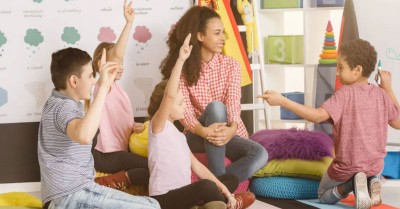
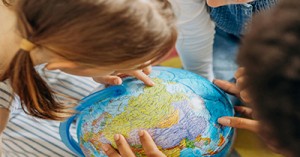
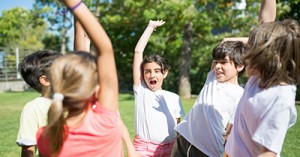
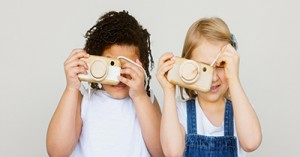
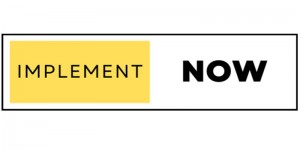
 Here is the list of the EYLF Learning Outcomes that you can use as a guide or reference for your documentation and planning. The EYLF
Here is the list of the EYLF Learning Outcomes that you can use as a guide or reference for your documentation and planning. The EYLF The EYLF is a guide which consists of Principles, Practices and 5 main Learning Outcomes along with each of their sub outcomes, based on identity,
The EYLF is a guide which consists of Principles, Practices and 5 main Learning Outcomes along with each of their sub outcomes, based on identity, This is a guide on How to Write a Learning Story. It provides information on What Is A Learning Story, Writing A Learning Story, Sample
This is a guide on How to Write a Learning Story. It provides information on What Is A Learning Story, Writing A Learning Story, Sample One of the most important types of documentation methods that educators needs to be familiar with are “observations”. Observations are crucial for all early childhood
One of the most important types of documentation methods that educators needs to be familiar with are “observations”. Observations are crucial for all early childhood To support children achieve learning outcomes from the EYLF Framework, the following list gives educators examples of how to promote children's learning in each individual
To support children achieve learning outcomes from the EYLF Framework, the following list gives educators examples of how to promote children's learning in each individual Reflective practice is learning from everyday situations and issues and concerns that arise which form part of our daily routine while working in an early
Reflective practice is learning from everyday situations and issues and concerns that arise which form part of our daily routine while working in an early Within Australia, Programming and Planning is reflected and supported by the Early Years Learning Framework. Educators within early childhood settings, use the EYLF to guide
Within Australia, Programming and Planning is reflected and supported by the Early Years Learning Framework. Educators within early childhood settings, use the EYLF to guide When observing children, it's important that we use a range of different observation methods from running records, learning stories to photographs and work samples. Using
When observing children, it's important that we use a range of different observation methods from running records, learning stories to photographs and work samples. Using This is a guide for educators on what to observe under each sub learning outcome from the EYLF Framework, when a child is engaged in
This is a guide for educators on what to observe under each sub learning outcome from the EYLF Framework, when a child is engaged in The Early Years Learning Framework describes the curriculum as “all the interactions, experiences, activities, routines and events, planned and unplanned, that occur in an environment
The Early Years Learning Framework describes the curriculum as “all the interactions, experiences, activities, routines and events, planned and unplanned, that occur in an environment